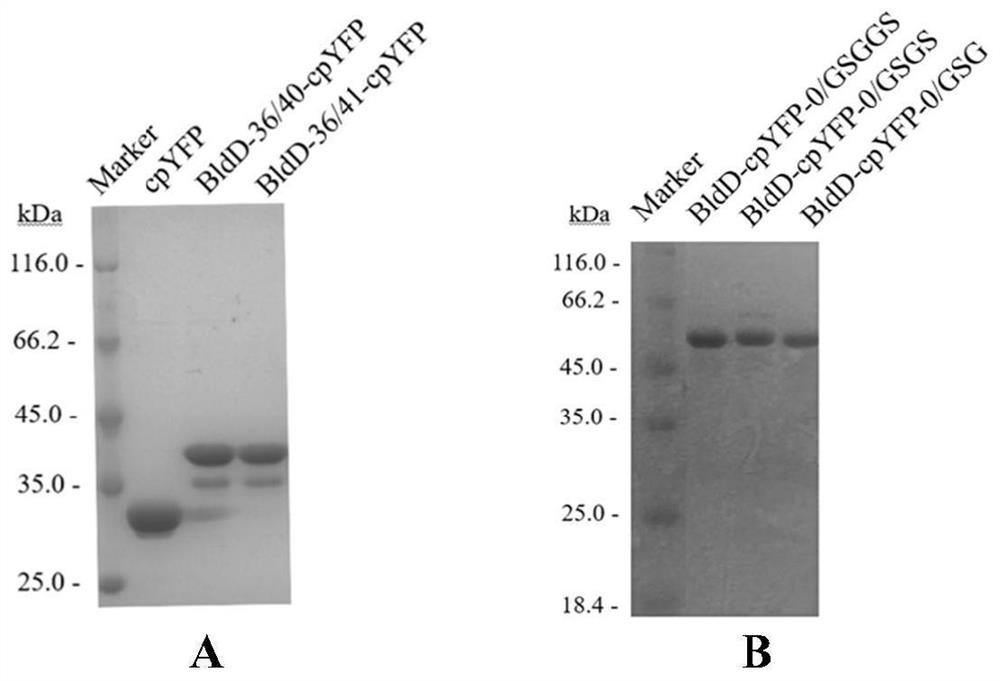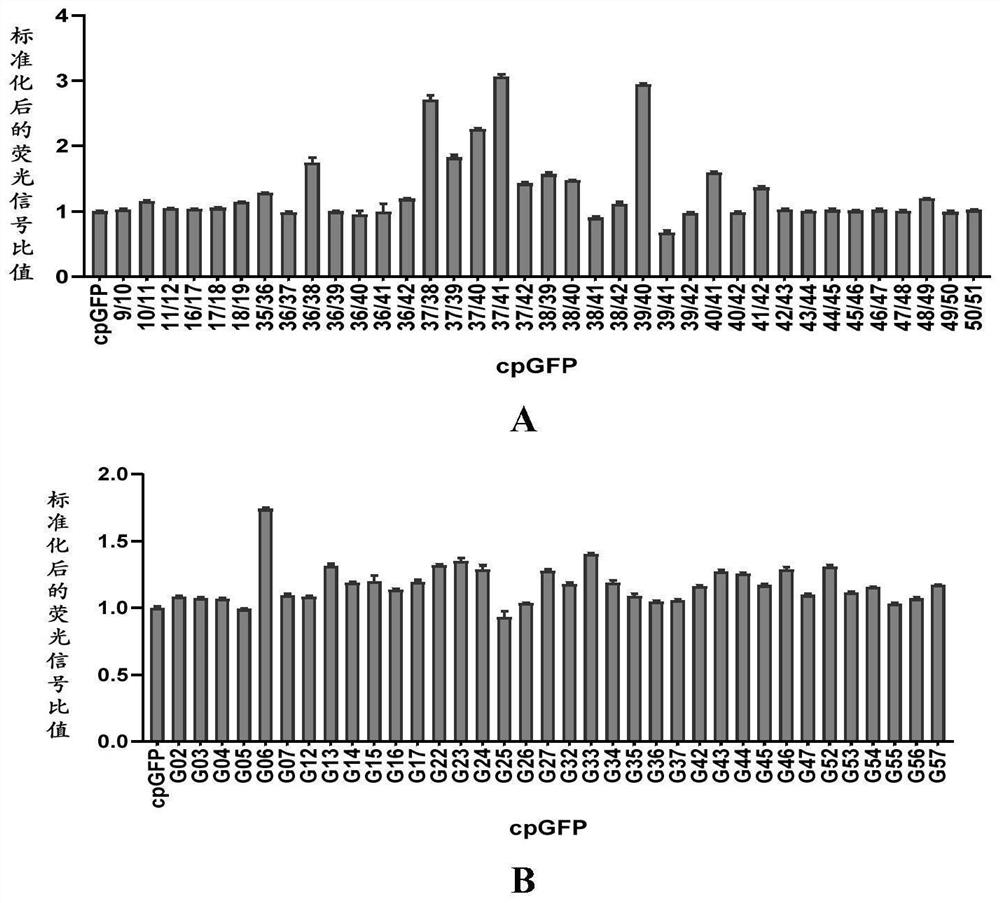Cyclic diguanylate optical probe as well as preparation method and application thereof
An optically active, nucleic acid molecule technology, applied in the field of optical probes, can solve the problems of cumbersome detection methods, easy interference of spectral overlap, poor water solubility, etc., and achieves the effect of eliminating sample processing steps, large dynamic changes in fluorescence, and good specificity.
- Summary
- Abstract
- Description
- Claims
- Application Information
AI Technical Summary
Problems solved by technology
Method used
Image
Examples
Embodiment 1
[0155] Example 1: c-di-GMP binding protein particles
[0156] The BldD gene in the Streptomyces coelicolor gene was amplified by PCR, the PCR product was purified and recovered after gel electrophoresis, and the pCDFduet vector was subjected to PCR amplification at the same time. Homologous recombination was used for ligation, and the ligation product was transformed into DH5α (TransGen Biotech) competent cells. The transformed DH5α was spread on LB plates (streptomycin 100ug / mL), and cultured at 37°C overnight. The growing DH5α transformant was extracted from the plasmid and then identified by PCR. After the positive plasmid is correctly sequenced, the subsequent plasmid construction is carried out.
Embodiment 2
[0157] Example 2: Expression and detection of cpYFP optical probes with different insertion sites and tandem linkers
[0158] In this example, the following sites were first selected to be inserted into cpYFP based on pCDFduet-BldD to obtain the corresponding plasmids containing the coding sequence of the singlet optical probe: 9 / 10, 10 / 11, 11 / 12, 16 / 17, 17 / 18, 18 / 19, 35 / 36, 36 / 37, 36 / 38, 36 / 39, 36 / 40, 36 / 41, 36 / 42, 37 / 38, 37 / 39, 37 / 40, 37 / 41 , 37 / 42, 38 / 39, 38 / 40, 38 / 41, 38 / 42, 39 / 40, 39 / 41, 39 / 42, 40 / 41, 40 / 42, 41 / 42, 42 / 43, 43 / 44, 44 / 45, 45 / 46, 46 / 47, 47 / 48, 48 / 49, 49 / 50, 50 / 51. The amino acid sequences of exemplary intercalating optical probes are shown in Table 1. The nucleic acid sequence of an exemplary insertion-type optical probe is shown in SEQ ID NO: 14 (BldD-36 / 41-cpYFP).
[0159] Table 1
[0160] sequence insertion site SEQ ID NO:6 36 / 37 SEQ ID NO:7 36 / 38 SEQ ID NO:8 36 / 39 SEQ ID NO:9 36 / 40 SEQ ID NO:10 36 / 41 SE...
Embodiment 3
[0169] Example 3, Expression and detection of cpGFP optical probes with different insertion sites and tandem linkers
[0170] According to the method in Example 1, cpYFP was replaced by green fluorescent protein cpGFP, fused to c-di-GMP binding protein to construct c-di-GMP green fluorescent protein fluorescent probe, expressed and detected according to the method in Example 2. The result is as image 3 , As shown in A, the results of fluorescence detection showed that 37 / 38, 37 / 40, 37 / 41, and 39 / 40 sites responded more than 2 times to c-di-GMP.
[0171] According to the method in Example 2, cpGFP multiplex optical probes containing different tandem linkers were obtained. The result is as image 3 , as shown in B, the test results show that the response to c-di-GMP exceeds 1 times: G02, G03, G04, G06, G07, G12, G13, G14, G15, G16, G17, G22, G23, G24, G26, G27, G32, G33, G34, G35, G36, G37, G42, G43, G44, G45, G46, G47, G52, G53, G54, G55, G56, G57; the response to c-di-GMP ...
PUM
 Login to View More
Login to View More Abstract
Description
Claims
Application Information
 Login to View More
Login to View More - Generate Ideas
- Intellectual Property
- Life Sciences
- Materials
- Tech Scout
- Unparalleled Data Quality
- Higher Quality Content
- 60% Fewer Hallucinations
Browse by: Latest US Patents, China's latest patents, Technical Efficacy Thesaurus, Application Domain, Technology Topic, Popular Technical Reports.
© 2025 PatSnap. All rights reserved.Legal|Privacy policy|Modern Slavery Act Transparency Statement|Sitemap|About US| Contact US: help@patsnap.com



